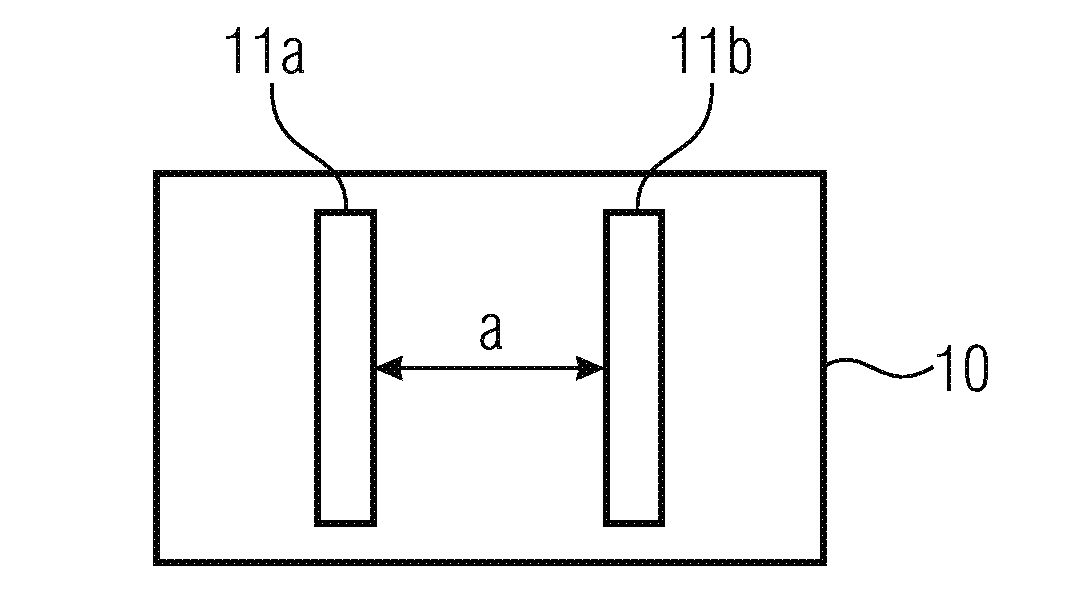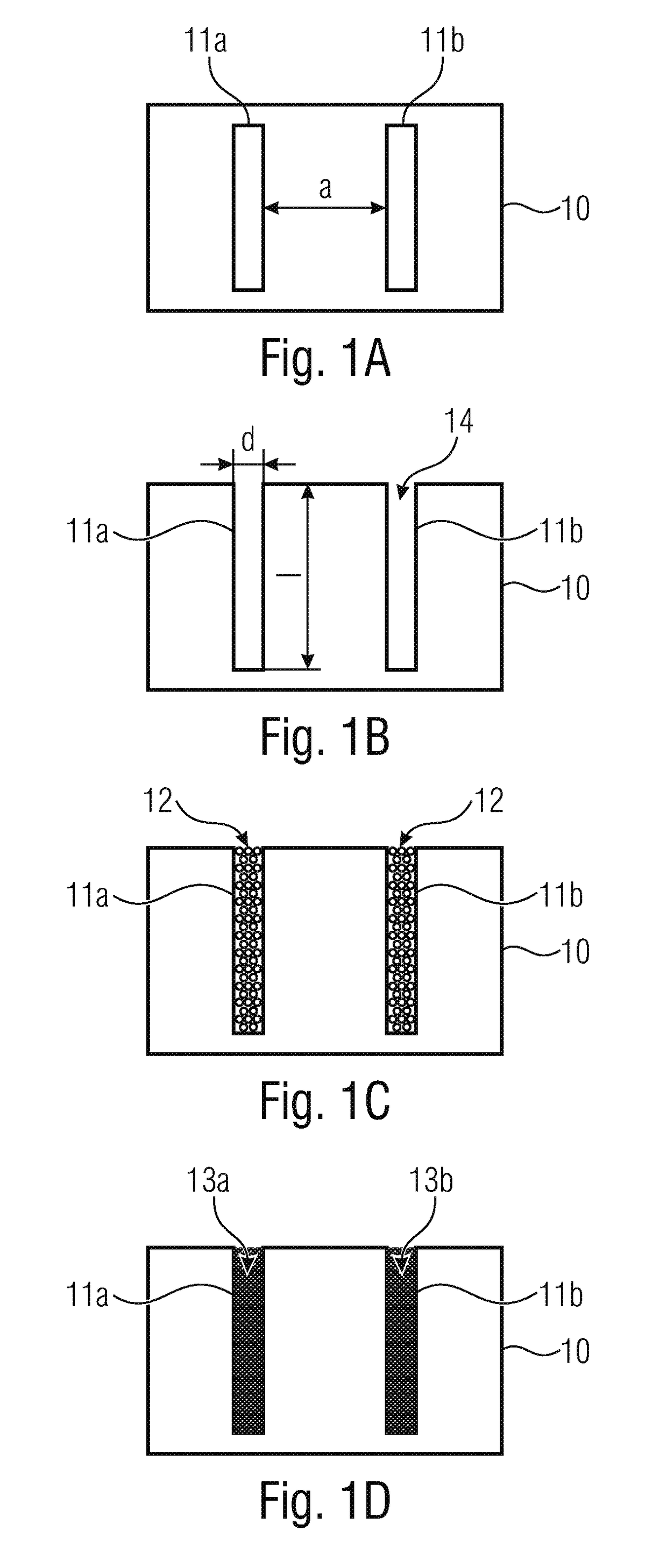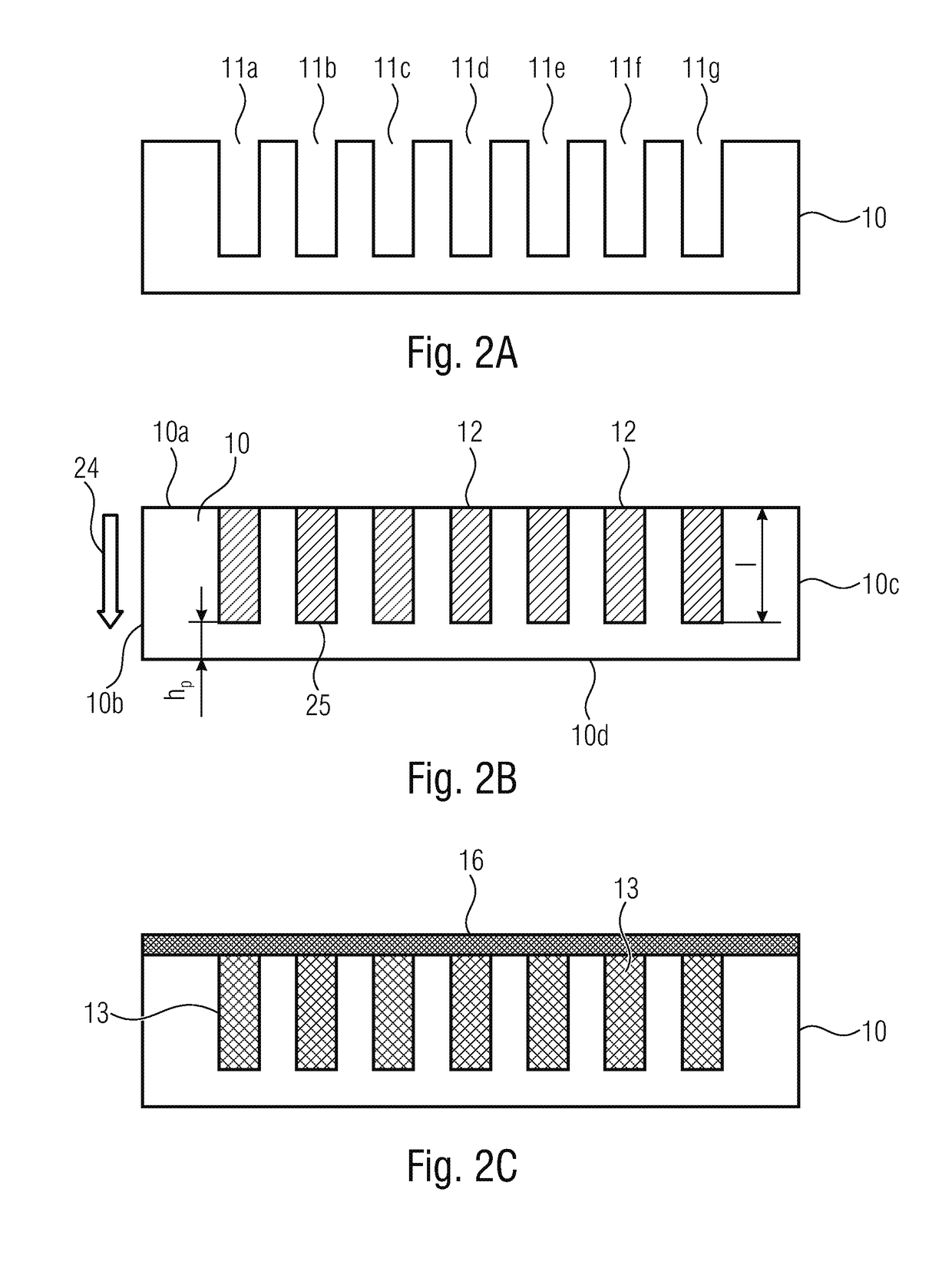Method of producing a magnetic structure
a magnetic structure and method technology, applied in the field of method of producing a magnetic structure, can solve the problems of reducing the degree of miniaturization that is desired, reducing the inventive aspect ratio, and reducing the degree of miniaturization achieved by conventional methods, etc., to achieve the effect of high inventive aspect ratio, high magnetic flux density, and increasing magnetic flux density
- Summary
- Abstract
- Description
- Claims
- Application Information
AI Technical Summary
Benefits of technology
Problems solved by technology
Method used
Image
Examples
Embodiment Construction
[0053]FIGS. 1A to 1D show graphic pictures for illustrating an inventive method.
[0054]FIG. 1A shows a top view of a substrate 10 comprising two mutually spaced-apart cavities 11a, 11b. The cavities 11a, 11b are introduced into the substrate 10 by means of suitable methods. The left-hand cavity 11a is spaced apart by a measure a from the right-hand cavity 11b. Said measure a will also be referred to as pitch when illustrating the following embodiments.
[0055]FIG. 1B shows a lateral view of the substrate 10. As is shown in the example of the left-hand cavity 11a, the cavity 11a comprises a depth, or depth of penetration, of the length l as well as a lateral extension of the width d. The ratio of the length l to the width d is also referred to as an aspect ratio l / d.
[0056]In accordance with the invention, the cavity 11a has a depth / of at least 50 μm. In accordance with some embodiments, the cavity 11a may also have an aspect ratio l / d of at least 4:1 or of at least 6:1 or even of at lea...
PUM
| Property | Measurement | Unit |
|---|---|---|
| depth | aaaaa | aaaaa |
| residual thickness | aaaaa | aaaaa |
| thickness | aaaaa | aaaaa |
Abstract
Description
Claims
Application Information
 Login to View More
Login to View More - R&D
- Intellectual Property
- Life Sciences
- Materials
- Tech Scout
- Unparalleled Data Quality
- Higher Quality Content
- 60% Fewer Hallucinations
Browse by: Latest US Patents, China's latest patents, Technical Efficacy Thesaurus, Application Domain, Technology Topic, Popular Technical Reports.
© 2025 PatSnap. All rights reserved.Legal|Privacy policy|Modern Slavery Act Transparency Statement|Sitemap|About US| Contact US: help@patsnap.com



